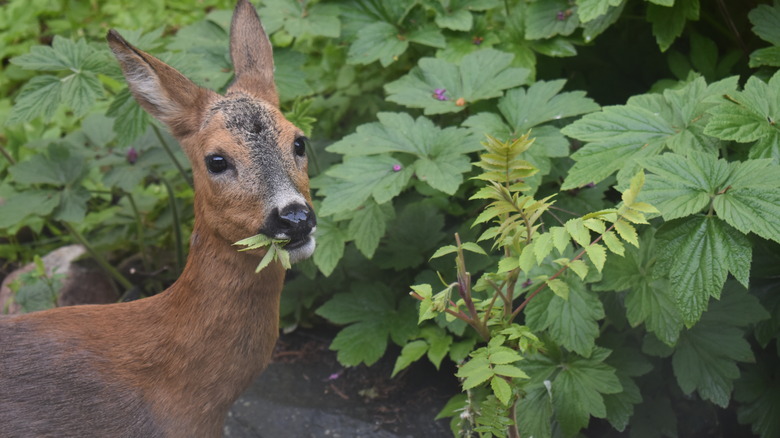Garden Trees, Shrubs & Vines
Sakshi Khaitan
Named after its place of origin, based in the wet woodlands of Japan’s Mt. Hakone, Hakone grass (Hakonechloa macra) has become a popular tuft choice among gardeners. Also called Japanese forest grass, it’s admired for its 10-inch-long, lance-like foliage that could pass off as a small bamboo tree. If you put on your poetic hat, you’ll probably find the drooping shards resemble a descending waterfall. While most of the Hakone cultivars have plain, bright green leaves, some varieties — like H. macra Albostriata and H. macra Alboaurea — grow variegated verdures with white or yellow stripes that can add visual texture to your landscape.
Although hardy from Zones 4 to 9, some cultivars cannot withstand the cool temperatures of Zone 4 or the heat of Zones 8 and 9. However, these colorful ornamental grasses stand out from their sun-loving peers because of their high shade tolerance, which can put all your dark area decorating woes to rest. Despite being spreaders, these slow-growing grasses aren’t invasive, which adds to their popularity.
Reasons for planting Hakone grass

Hanne Kobaek/Getty Images
Japanese forest grass’s biggest appeal lies in its 3-foot-wide lush, green clump that blushes a soft burgundy or pink during the fall. It eventually browns and withers away in the winter. This color variation adds a lot of visual drama to your garden throughout the year, which, paired with their slight swaying during windy days, will enthrall onlookers. Such versatility also comes in handy when designing your garden, as these perennials fit right in as accent plants, gap fillers, and will make your landscape borders look lush and natural. Also, during summer, the deciduous grass blooms delicate greenish-yellow flowers.
If visual appeal doesn’t cut it for you, Hakone grass also offers various functional benefits. Rabbits and deer steer clear of these ornamentals, making them an ideal planting choice for yards experiencing heavy animal traffic. Moreover, they’re resistant to black walnuts, infamous for releasing growth-inhibiting chemicals. They also tolerate varying light conditions, glistening a tranquil green in heavy shade and turning yellow in dappled sunlight. However, full sun exposure can bleach them out and sometimes cause leaf scorch if the climate is dry. Further, they’re easy to maintain, requiring little pruning and pest control.
Featuring Hakone grass in your landscaping
Molly Shannon/Shutterstock
Given its weeping texture and color-transforming foliage, Hakone grass is an elegant addition to any yard. These cascading greens coalesce and intermix when planted nearby, making them suitable as ground cover. You can also plant their golden-yellowish-hued, variegated varieties like H. macra ‘All Gold’ in dark spots to lighten the area. They also serve well as understory vegetation in woodland gardens.
Further, the diminutive stature of Japanese forest grass makes it a good fit for container gardening. When provided with well-drained, moist soil, the tuft grows, spreads, and spills over the pot’s edges, adding to its visual appeal. Combining it with thriller and filler plants creates eye-catching garden containers. However, insulate the plant during cool temperatures by spreading mulch or covering it with a larger pot.
Alternatively, you can turn the Hakone tuft into your landscape’s focal point by planting it as an accent piece around the garden edges, pathways, or along rocks. Either interplant it with similar shade-tolerant plants or grow it behind purple or blue-hued plants, such as lilac, mugo pine, and coral bells. You can also complement the tiny clump with large-leaved Hosta plants.